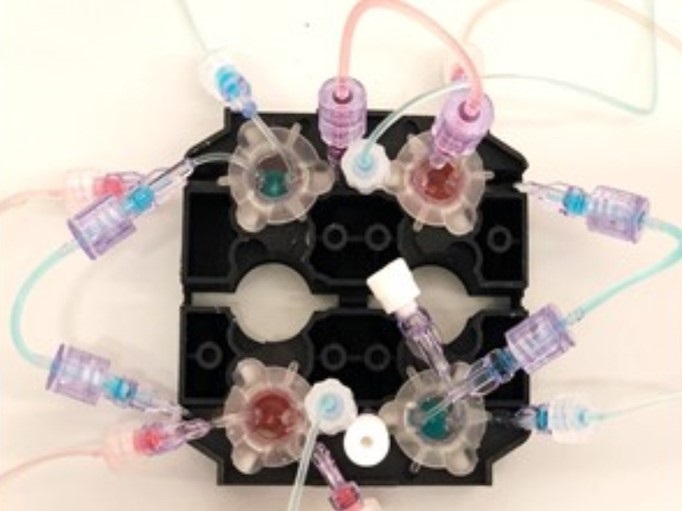First engineered platform to model microbiota-gut-brain axis
Despite the prevalence and socio-economic costs of neurodegenerative diseases such as Alzheimer’s(opens in new window), their triggers remain elusive. One potential source lies in the link between the brain, the gut and its intestinal microflora. First proposed 100 years ago, this research area suggests that some neurodegenerative diseases are influenced by diet and lifestyle. “We now have proof that ageing, bad diets and stress affect intestinal microbiota, with mounting data suggesting this impacts brain functionality. But we lack in vitro research tools to move from correlation to causation,” says Carmen Giordano, coordinator of the MINERVA(opens in new window) project, which was funded by the European Research Council(opens in new window) (ERC). MINERVA developed the first engineered multi-organ platform, modelling the key biological connections along the microbiota-gut-brain axis. “This really is a groundbreaking achievement for the study of the biochemical mechanisms underlying the microbiota-neurodegenerative hypothesis and for the search for diet-based treatments,” adds Giordano, associate professor at the Polytechnic University of Milan(opens in new window), the project host.
Breakthrough multi-organ platform
MINERVA’s multi-organ platform(opens in new window) comprises three interconnected compartments. Each hosts patented millifluidic organ-on-a-chip devices loaded with cellular models representing the key characteristics of the: brain and blood-brain barrier; gut epithelium and immune system; and microbiota. These devices are hydraulically connected to simulate the transport along the axis of bioactive molecules(opens in new window), principally secretome(opens in new window), produced by the microbiota. The in vitro cell models within these devices were engineered to simulate the key features of the relevant biological systems. For example, the microbiota compartment can culture bacteria within a 3D polymeric matrix modelling intestinal mucus, a key component of gut epithelium. While in the brain compartment, a new 3D brain cell model simulates brain tissue and other biological features, of both normal physiological and normal pathological conditions.
Validating the platform
The platform represented both healthy and neurodegenerative conditions. Two culturing conditions were set up in the brain compartment. Neurons, astrocytes and microglia – the brain’s main cells – were co-cultured to explore microbiota effects, and cultured individually to investigate microbiota impact on each cell type. The team cultured human intestinal microbiota known to damage brain cells by activating its neuroimmune system, alongside the complete intestinal microbiota collected from Alzheimer’s disease patients and healthy donors, after it had interacted with intestinal mucus. The resulting secretome then flowed through the cell-loaded platform; the brain cell response was then assessed. “Comparing healthy and neurodegenerative scenarios, we observed the same brain cell response to detrimental microbiota stimuli as reported in literature and experienced by patients. This confirms that our bioengineered approach and tool can reveal microbiota-brain triggers,” says Giordano.
The future of disease modelling
MINERVA contributes to the emerging field of disease modelling, also suggesting a new field blending bioengineering and neuroscience which could explore other disorders, including autism, multiple sclerosis and autoimmune illnesses. It could also model the impact of antibiotic or other drugs, on the body. Crucially, as the human microbiota can be modified through diet, the work has significant treatment implications. By introducing selected prebiotics (food ingredient) and probiotics (health-promoting bacteria strains), the platform could help identify suitable dietary and lifestyle changes, offering effective, non-invasive preventative and therapeutic strategies. “Our experimental model’s versatility allows researchers to study the cellular and molecular mechanisms underlying, potentially, all the severe multi-organ diseases,” notes Giordano. As well as numerous opportunities to promote the work of MINERVA, in 2019 Giordano was awarded an ERC Proof of Concept grant for the DIANA(opens in new window) project looking at brain-targeting drug screening. She also received funding for the MIUR-FARE PEGASO(opens in new window) project (from the Italian Ministry of University and Research), which is trialling the MINERVA platform for personalised medicine.







